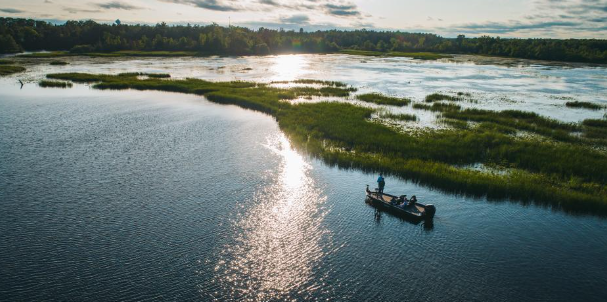Winter can be a great time to catch fish if you live in a cold climate. Others may not be able to stop ice fishing because the temperature isn’t low enough. The region where I live, as I’m sure many others do, is rarely cold enough to allow me to ice-fish for an extended time period. It is also not warm enough to enjoy or reach winterized fish. Even though it’s nice to go out on a sunny day, the frozen fingers, the iced-over guides, and the unresponsive bass who hold deep in the water make trips difficult. Take these steps if you are unable to go fishing during the winter.
Map Reconnaissance
Use your favorite map, and the words topographical maps to search for your local lakes. You can use your off-season time to find out where you will be fishing in spring. Find new bodies of water that can provide new experiences for you and your friends. Note the contours beneath the water in your favorite spots so you can determine where the fish will be during the season. Using maps before spring will help you identify areas in rivers and streams that may hold fish. These methods will determine the direction that bass will travel in preparation for spawning season. Once the water reaches 50 degrees, bass will move from the depths to the mid-level ridges before moving into the spawning areas. Look for the edges of channels, “plateaus”, and ridges that lead to large expanses of flat water in the range 3-10 feet. Finding these staging and spawning areas could result in some of the best fishing of the season.
Skill Building
You can’t substitute time spent on the water. If that is not possible, you can watch others do it. You have an incredible amount of resources at your fingertips, including blogs, articles, and instructional videos. Watching the experts demonstrate techniques and skills you might not know is a great way to learn. This is the time to learn new skills and techniques. Listen to experts describe where they are fishing and the environmental factors that led them to that particular location. The experts will tell you that 90% of fish live in only 10% of water. Finding this 10% is crucial to hooking up.
Reset Your Gear
It’s time to organize your tackle boxes. Fix bent hooks. Remove rust. Make an inventory of what you already have and what would be nice to have in the spring. List everything you need. Restock your soft plastics and hooks. Replace any lures that have fallen to the bottom of the sea. Also, buy some new gear to prepare for the spring bass and trout spawn. Check your line and leaders. Lubricate your reels, if needed. Remember that all your fishing permits, licenses, and other paperwork may expire at the beginning of the year.
This post was written by a professional at Copeland Outdoors. Welcome to Copeland Outdoors, where the sun always shines and the fish are always biting! Right in the heart of St. Petersburg, Florida, our charter, owned and operated by the legendary Tyler Copeland, promises an adventure like no other. Embark on an st petersburg inshore fishing charters and reel in some of the most prized catches The Bay area has to offer. Tyler, with his years of experience and a knack for finding the honey holes, will guide you to where the fish are practically jumping into the boat! For those craving a bit more adrenaline, why not try your hand at duck hunting or alligator hunting near you? Grab your sunscreen, and your sense of adventure, and come join us at Copeland Outdoors. Let’s make some waves and reel in some memories together!



